Yes, you can make your own puff pastry (when the Daring Bakers tell you to)
September 27th, 2009 | 59 Comments
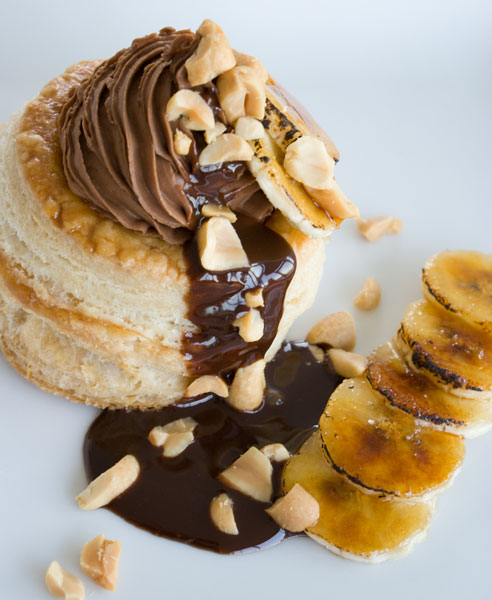
What is it about puff pastry? The mere mention of it sends shivers down every baker’s spine. Could it be the knowledge that it has 944 microscopic layers of dough and butter, which seem to break all laws of physics? You look down at your own two hands and think, “These two hands? All by themselves? No way,” before huffing off to the grocery store to buy the ready-made version. At the risk of sounding like Tony Robbins, I say “Yes way,” and this month’s Daring Bakers have laid down the law.
The September 2009 Daring Bakers’ challenge was hosted by Steph of A Whisk and a Spoon. She chose the French treat, Vols-au-Vent based on the Puff Pastry recipe by Michel Richard from the cookbook Baking With Julia by Dorie Greenspan.
Now please sit down. I have to break something to you. It might surprise you to learn that no restaurant I’ve ever worked in, no matter how fancy, ever made their own puff pastry (though surely there are some that I’ve never worked in that do.) If you peek in their freezer, you’ll find cases of stacked up sheets of dough, looking all guilty and unhomemade. Granted, it’s high quality, all-butter dough made by artisan vendors in our neighborhood and it saves the chef lots of hours and labor costs. I wouldn’t even know how to make enough puff pastry to feed hundreds of napoleon-loving patrons. Do you make lots of individual batches? Do you make one monster batch and pound out a dozen blocks of butter with a broomstick? The truth is, I’ve only made my own puff pastry a handful of times, and never in a professional setting, only at home.
It became obvious that if I wanted to have the priceless gift of knowledge, I was going to have to gift myself. So I tried to make this sultan of doughs on my own, with pretty good results. I checked off “make puff pastry” from the “Things to Do Before You Die” list, and carried on. Only half shamefully do I admit that over the following years I always bought it, since the all-butter products were pretty good and always rose. And so it went until this fateful month, when like a bear, I had to come out of puff pastry hibernation.
The not so secret thing that we all know but refuse to embrace, thanks to our 21st century impatience is this: other than following the recipe directions, the secret to making puff pastry is KEEPING IT COLD AT ALL TIMES. I know you know this. The key is to respect this. Whenever you have a smidgen of doubt about your puff pastry, shove it in the fridge. Don’t try to squeeze in just one more roll-out to save time. Think of this dough as a fish out of water. It can only be out of water for so long before death, and puff pastry is the fish. The fridge is its water.
Now that it’s clear I’m nuts, what with all these sea life metaphors flying around, we can methodically make the dough. The initial dough is very easy and should pose no problem for anyone. Even Chef Richard tells us not to worry about overmixing. And worry I didn’t. There was even some whistling while I mixed. Next, I needed to pound out the butter, and the tricky part was to not get all spastic and beat the butter into some amoeba shape. Mine looked like the Leaning Tower of Pizza and I had to coax it into a square shape with some poking. After that, it was all downhill. If you know how to roll dough, fold it over and carry it to the refrigerator, you can make puff pastry.
Here is a great video of Michel Richard with Julia Child demonstrating exactly how it’s done. If you’re reading this 3 years from now and the video is down, I’ve included the usual step-by-step how-to below.
Puff Pastry for Vols-au-Vents
(or any application)
From: Baking with Julia by Dorie Greenspan
Yield: 2-1/2 pounds dough
2-1/2 cups (12.2 oz/ 354 g) unbleached all-purpose flour
1-1/4 cups (5.0 oz/ 142 g) cake flour
1-1/2 teaspoon salt (you can cut this by half for a less salty dough or for sweet preparations)
1-1/4 cups (10 fl oz/ 300 ml) ice water
1 pound (16 oz/ 454 g) very cold unsalted butter
First make the puff pastry
1. The ingredients. Keep the butter cold.
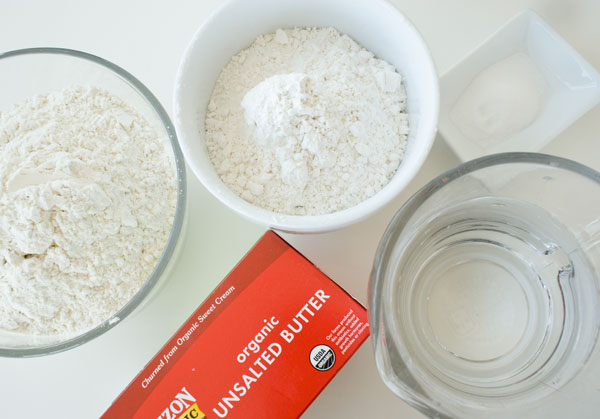
2. Place the all purpose flour, cake flour and salt into a food processor. Then pulse to mix. (You can also stir them together by hand.)
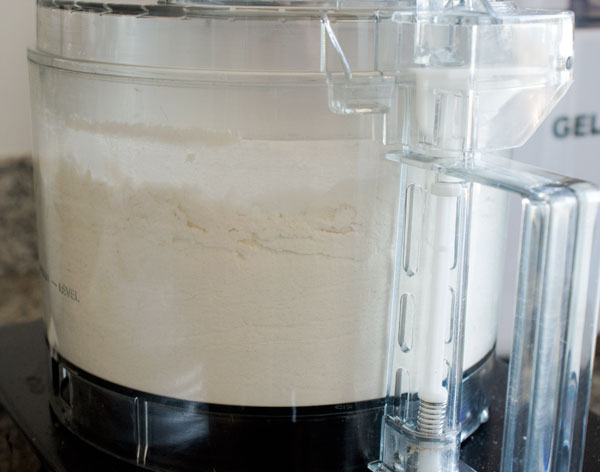
3. Add water all at once and process until a ball forms. Chef Richard says not to worry about overprocessing here.
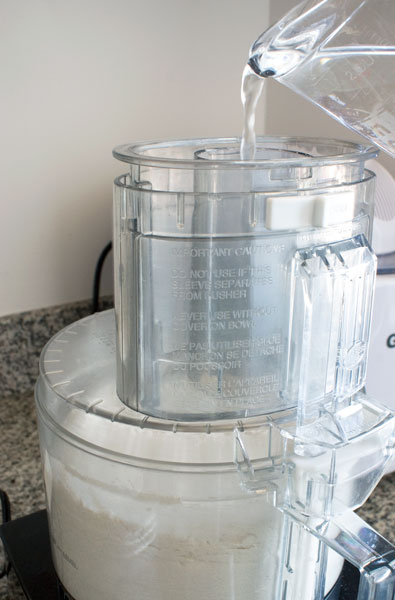
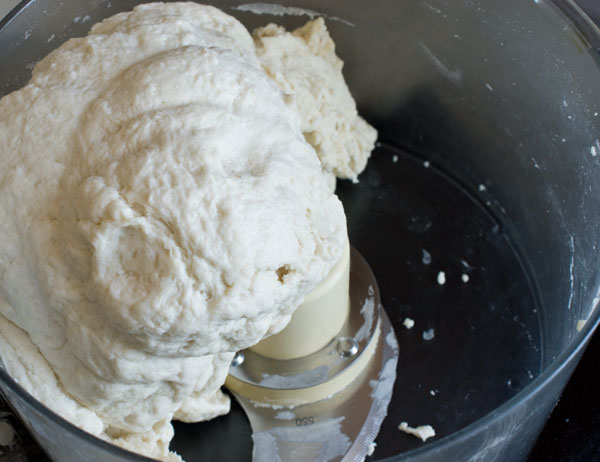
3. Form the dough into a ball, scratch a tic-tac-toe pattern on it (which helps relax the gluten in the dough), wrap in plastic, and refrigerate for 5 minutes.
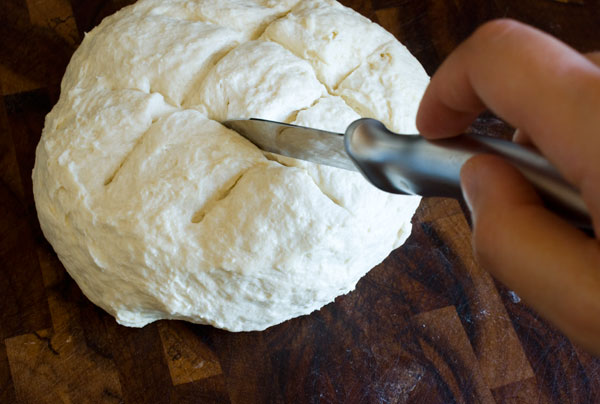
4. Meanwhile lay out your cold butter between two sheets of plastic wrap…
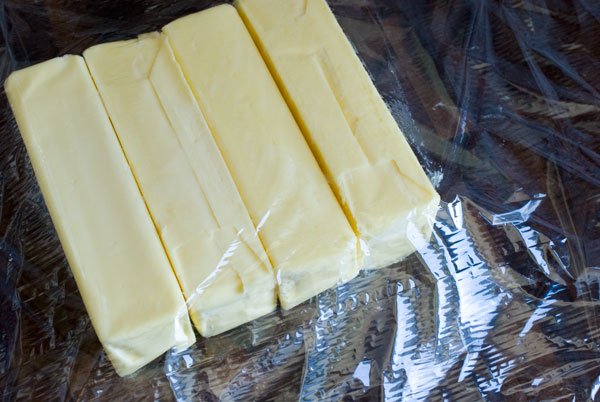
…and pound away with a rolling pin. You want it to be 1 inch high. Try to keep it rectangle shaped.
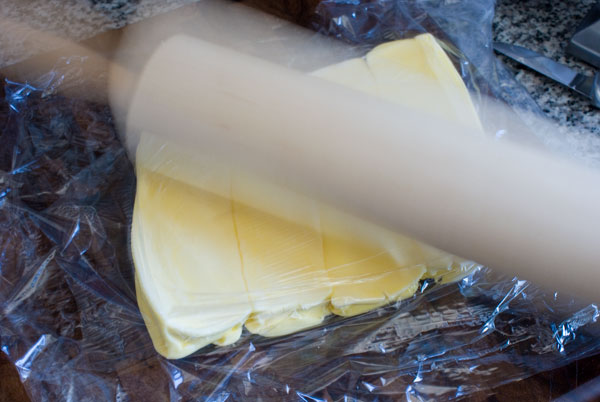
If it starts to morph into strange shapes, mold it back to a rectangle with your hands. If the butter looks like it’s melting or greasy, refrigerate it again until firm.
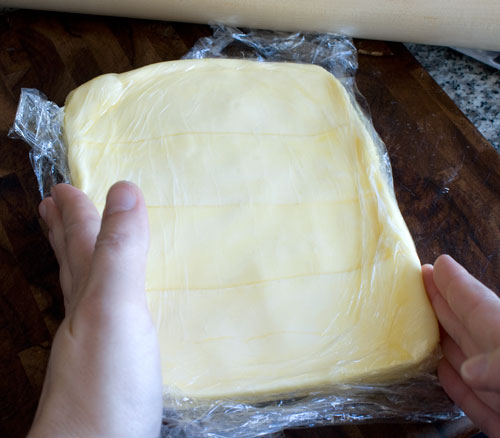
5. On a lightly floured surface, roll out your ball of dough into about a 12 inch shape, but be sure to keep the center 4 inches of the dough slightly thicker than the outer flaps. That will be the butter bed.
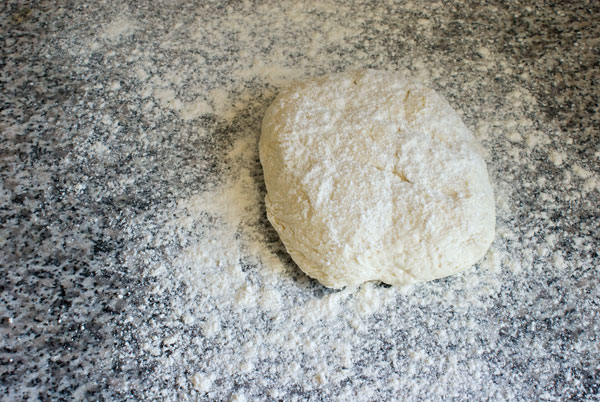
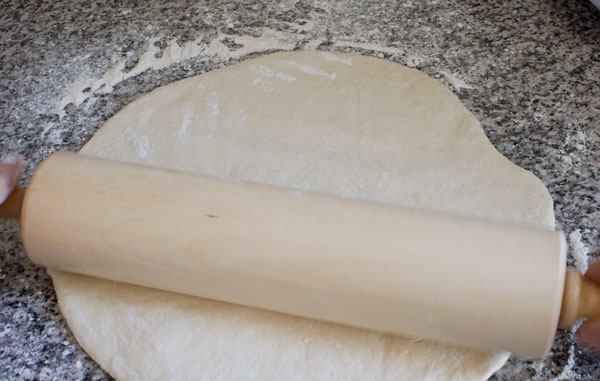
5. Place the butter in the center, and start folding the flaps over it.
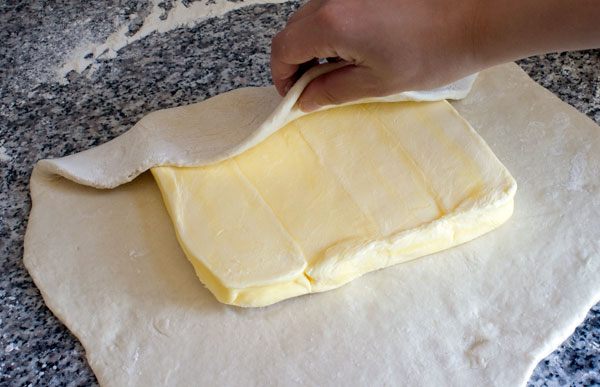
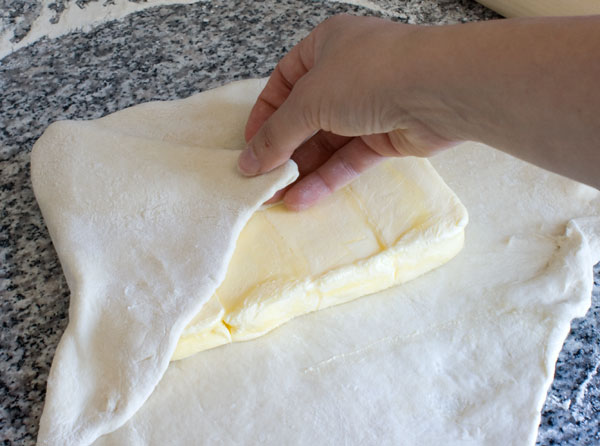
Until its all folded over the butter in a neat little package.
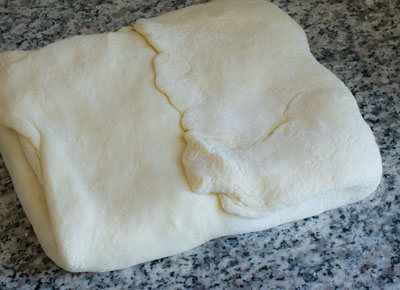
6. Flour the rolling surface again, and roll out the first rectangle. Try to manipulate the rolling pin so the butter rolls as evenly as possible inside the dough. It should be about 24 inches in length, but the exact size doesn’t matter. Width doesn’t matter at all.
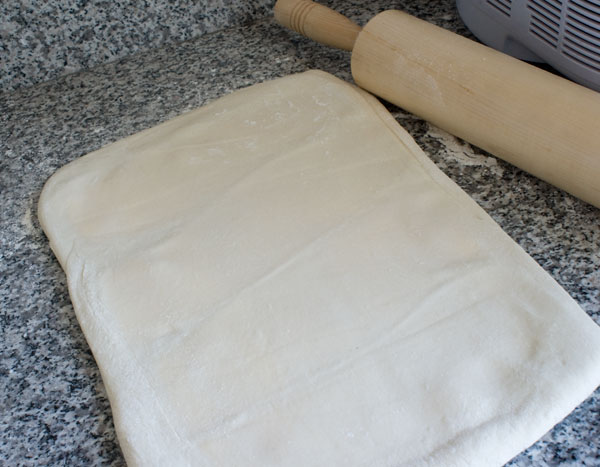
Fold the flaps over each other like a business envelope.
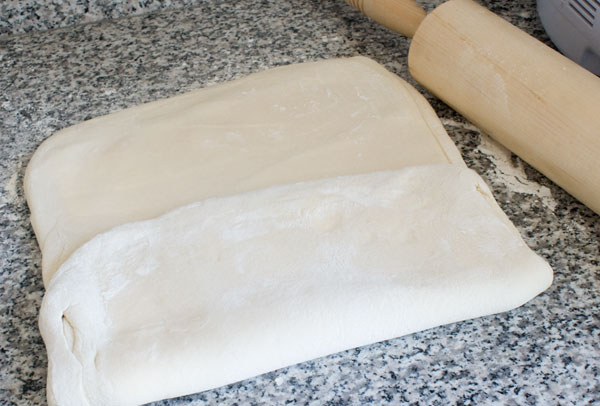
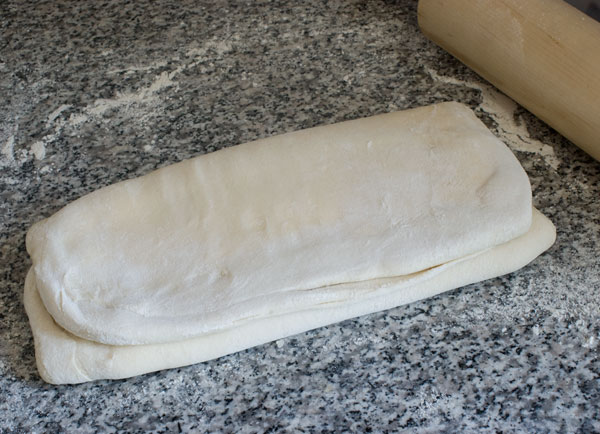
You’ve accomplished what’s called “one turn.” We need a total of 6 turns.
7. If your pastry is oozing butter out of the sides or seems greasy in any way, it needs to be refrigerated for at least 30 minutes. If it’s still ok and firm, you can do one more turn right now.
Rotate the dough so it’s folded opening is to the side and the dough is jutting away from you.
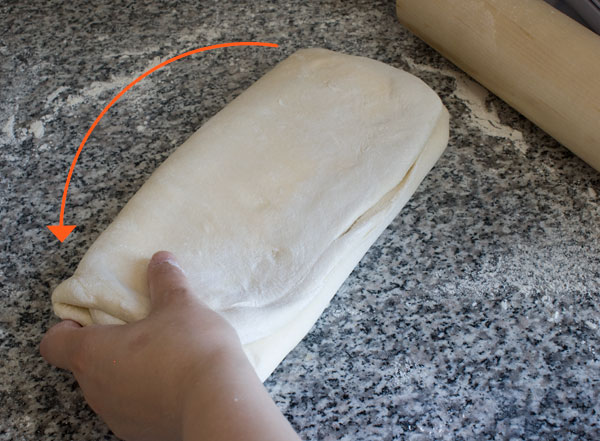
8. Now repeat the roll, going to approximately 24 inches, and fold the flaps over each other again. This is turn two.
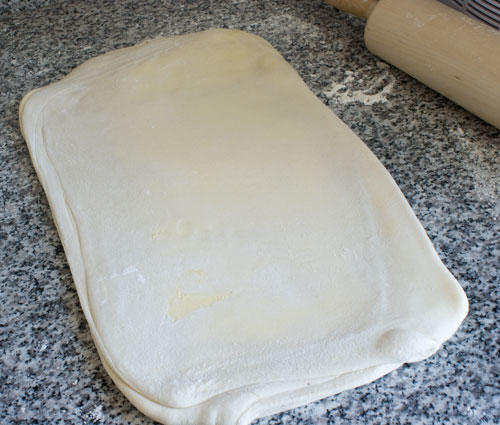
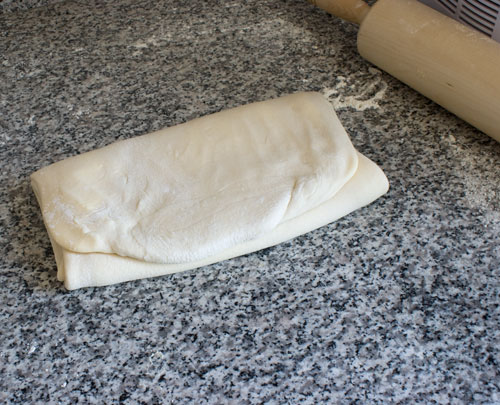
At this point, refrigerate the dough for 30 minutes to an hour, wrapped in plastic wrap.
Do 2 more turns as pictured above, refrigerate again, then do the final 2 turns and refrigerate again. Final dough.
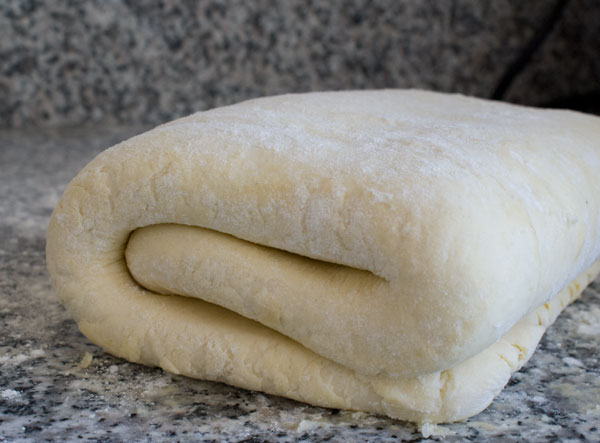
Here’s the cross section. You can see the hundreds of layers throughout. It looks like the earth’s core.
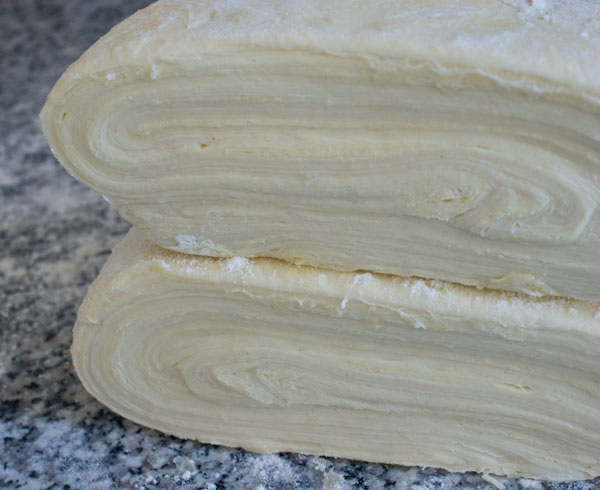
At this point the puff pastry can be rolled out and used for any application. Or frozen until the cravings hit.
To make the vols-au-vents
1. Cut off 1/4 of your dough, and roll it out about 1/4 inch thick.
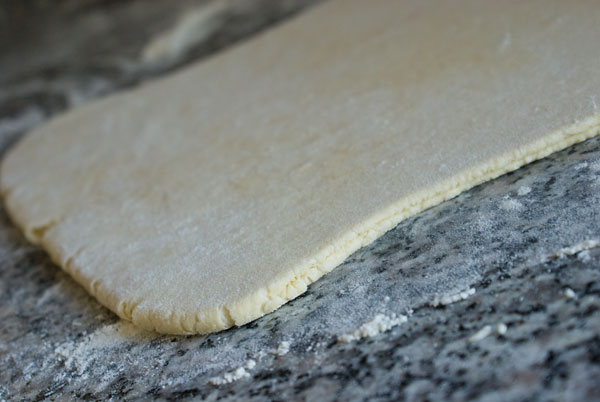
2. Cut out 4-inch circles. Then cut out holes from half of the available circles.
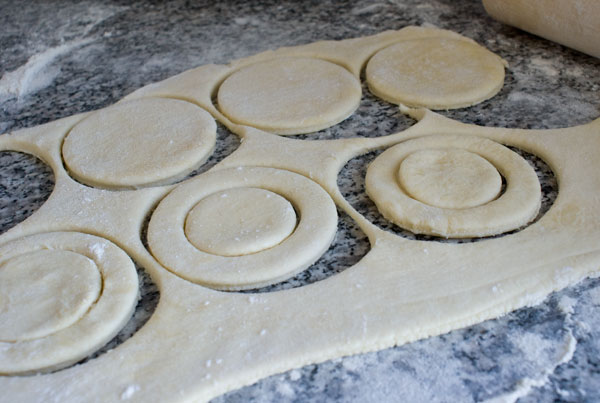
3. Lay them out on a parchment lined sheet pan, then dock them with a fork all over to let some of the steam out.
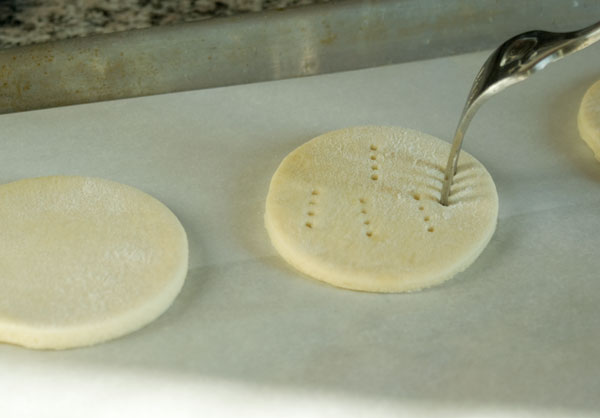
Egg wash the circles (egg wash consists of 1 egg whisked with 1 tablespoon water)
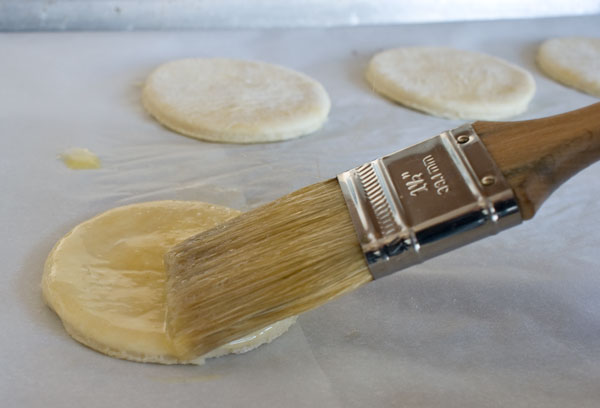
4. Glue circles on top and egg wash those.
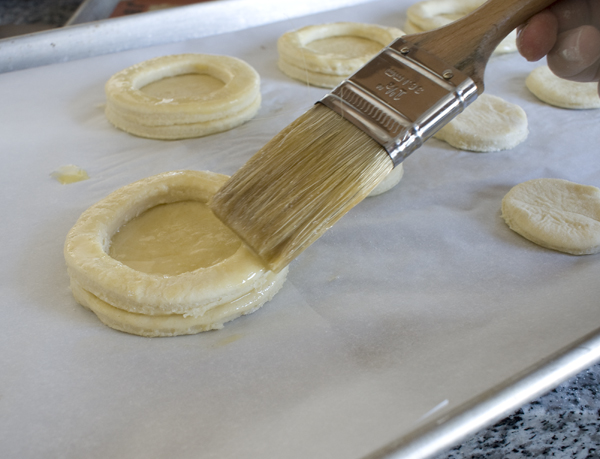
5. Preheat the oven to 400 degrees F and refrigerate the sheet pan while you wait for the oven. Bake until they are golden brown about 30 minutes.
Let cool completely before filling.
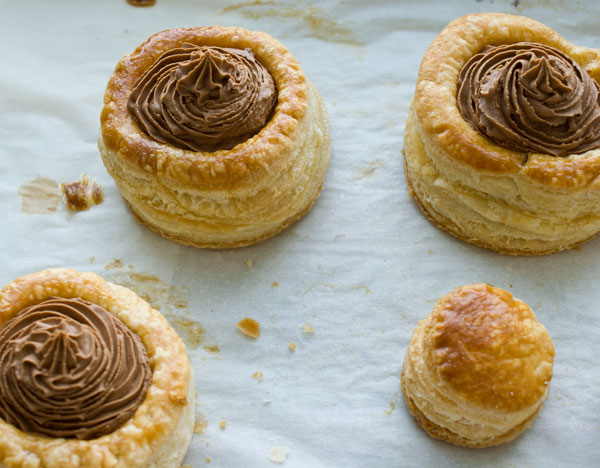
Next up: how to make a couple of different, easy fillings for some seriously elegant desserts.
Tags: butter, dessert, dough, pastry, puff pastry
59 Responses to “Yes, you can make your own puff pastry (when the Daring Bakers tell you to)”
Post a Comment
Your E-Mail will be kept private. * = required fields.






How long does it take to make the puff pastry? Also what is cake flour and what can I replace it with?
Brittany — Puff pastry is made over a couple of days, but the hands-on time is only aabout an hour on the first day, and 15 minutes on the second. Then you can bake it any day you want.
Cake flour is a finely milled flour, which has a lower protein content than other flours. It’s used to make lighter pastry with a tender crumb. You can make your own cake flour substitution. Follow this excellent guide
Fantastic pastry! It was delicious and easy the way you described it. Thank you so much!
Thanks so much for the recipe! I made a batch today and used some of it to make the vols-au-vents (filled with a chocolate mousse) and used another portion for a chicken pot pie. It was awesome for both. I never thought I’d be able to make puff pastry from scratch. Great recipe!!
If I use the pastry for croissants can I prepare them few days before I want to use them and defrost/cook them the day I want them? If I can frozen them shall I take them out and defrost them and after that bake them?
Thanks in advance
Eleni— This recipe isn’t really great as a croissant dough since there is no yeast. If you are making croissants though, you can preshape them, layout them out on a sheet pan, and freeze them. When you are ready to bake them, take the sheet pan out and let the croissants defrost at room temperature for about an hour, then bake.
Hi Irina,
Because I had already prepared this pastry and wanted to convert it into croissants for a family occasion we had today, after your comment above I decide to experiment a bit. Therefore I decided to incorporate in my pastry some yeast. I grind 10 gr. of dry yeast and incorporated it by spreading it on the dough mixed with flour while folding the dough again and again. I let it rest overnight in the refrigerator and next day I shaped and frosted them. Yesterday I defrosted them and let them proof and rise for about 3 hours. They were DELICIOUS and all 50-60 I had done have been eaten within half an hour (we were about 30 people there). Here is a quick pic with the result: http://imageshack.us/photo/my-images/407/croissants.jpg/
Thank you
Hi Eleni — That is an amazing save, and I would have never thought to try it. Very inventive, and the croissants look fantastic. Love it!
this looks awesome,il definetely try it….but can u suggest some alternative for egg and can i bake it at 200 degrees b’coz my oven is limited to that temperature…….:)